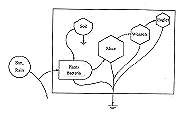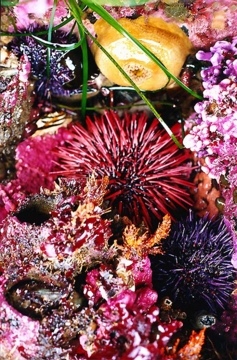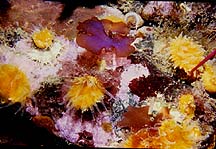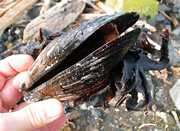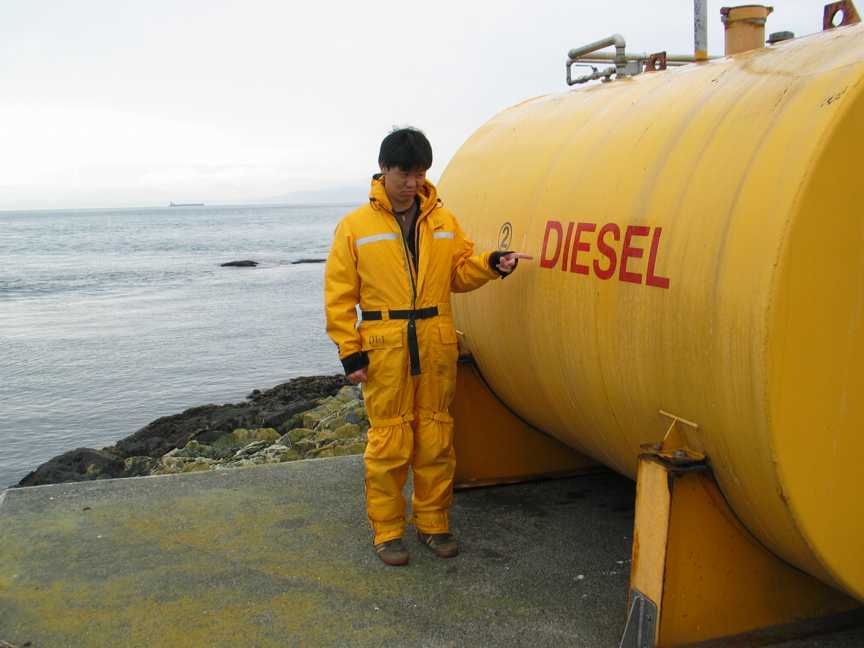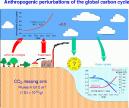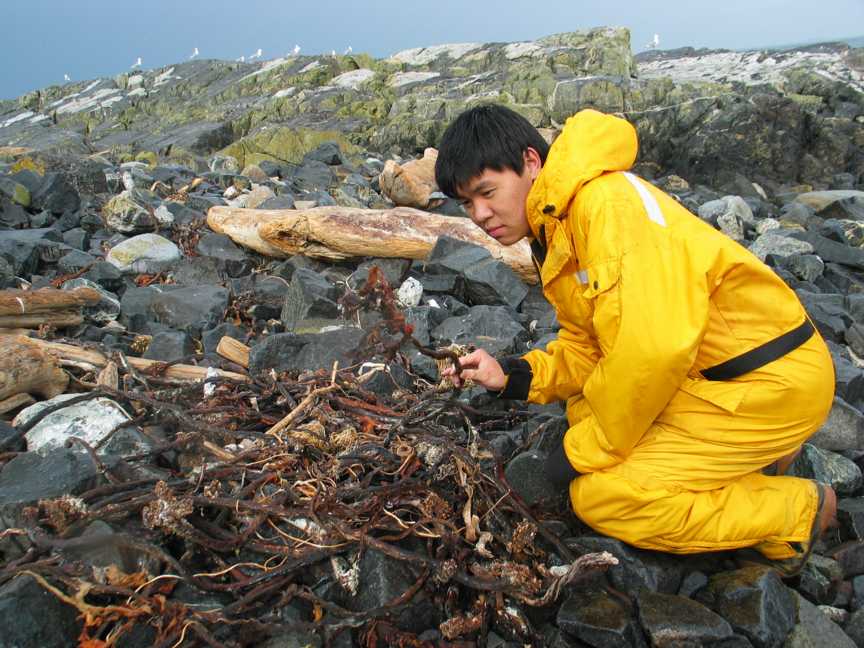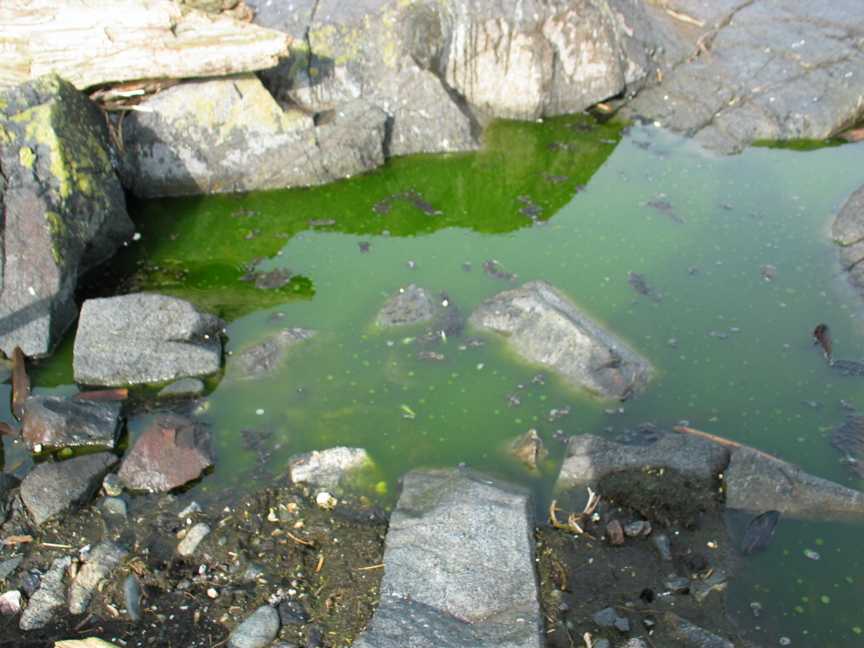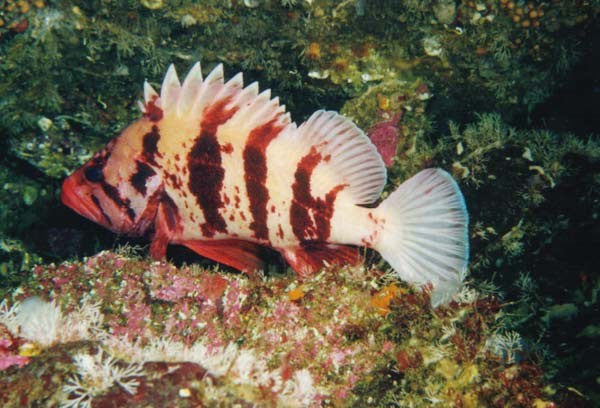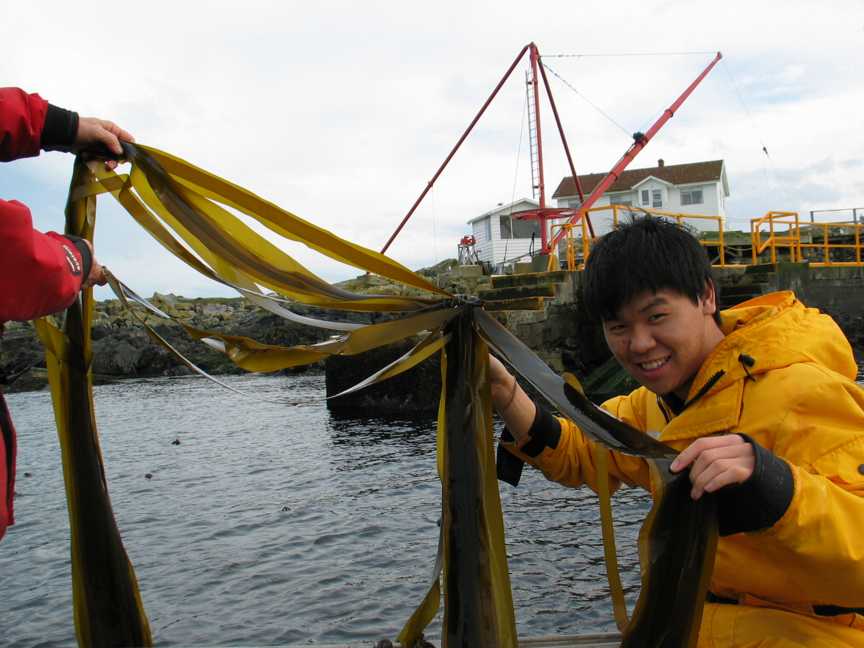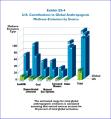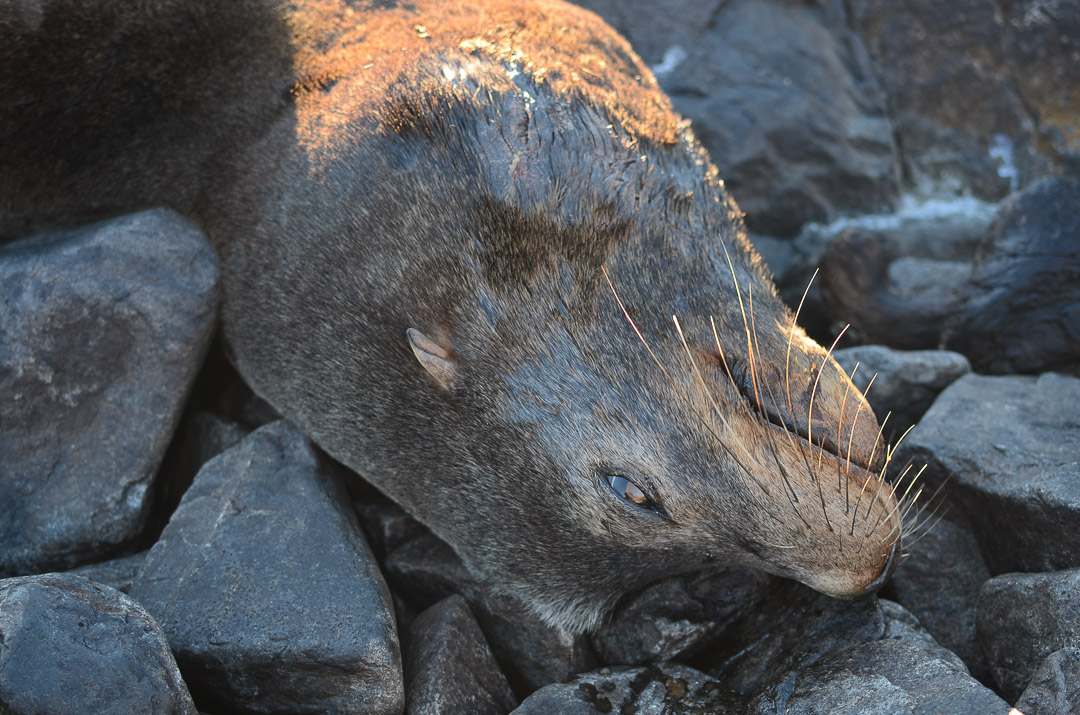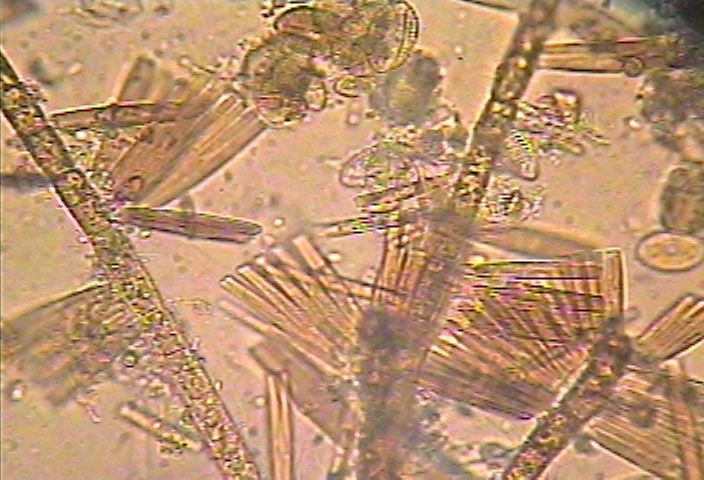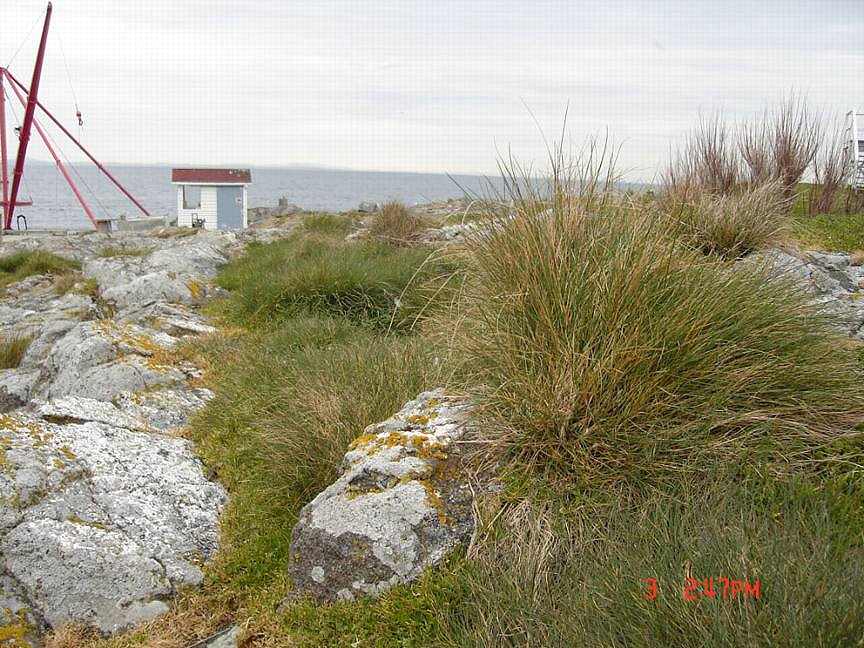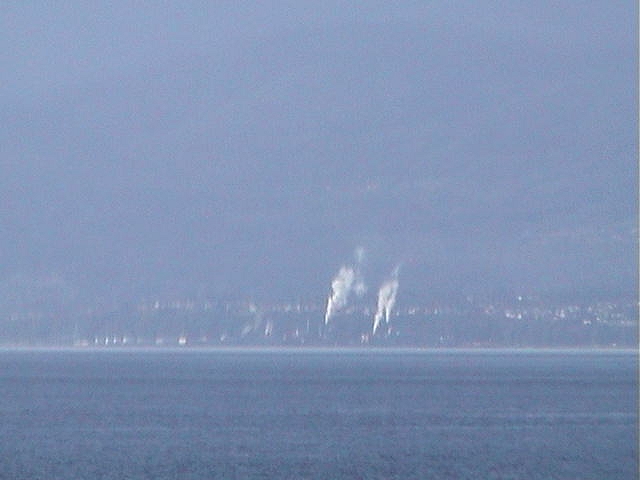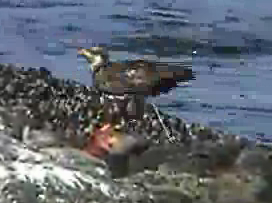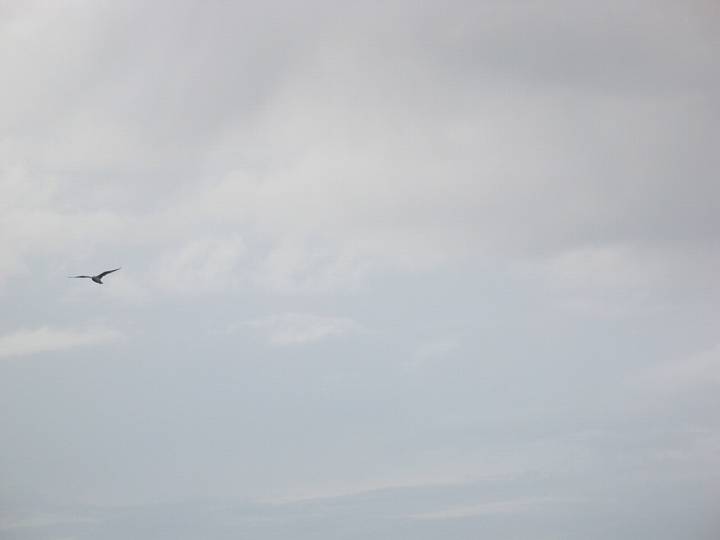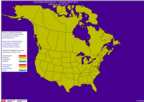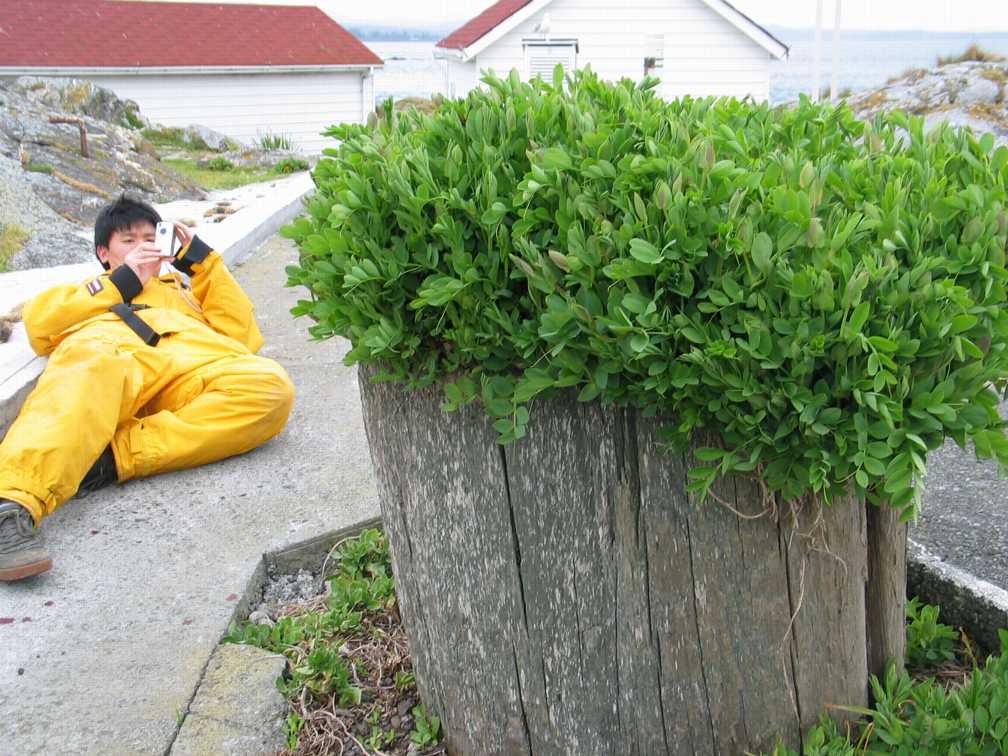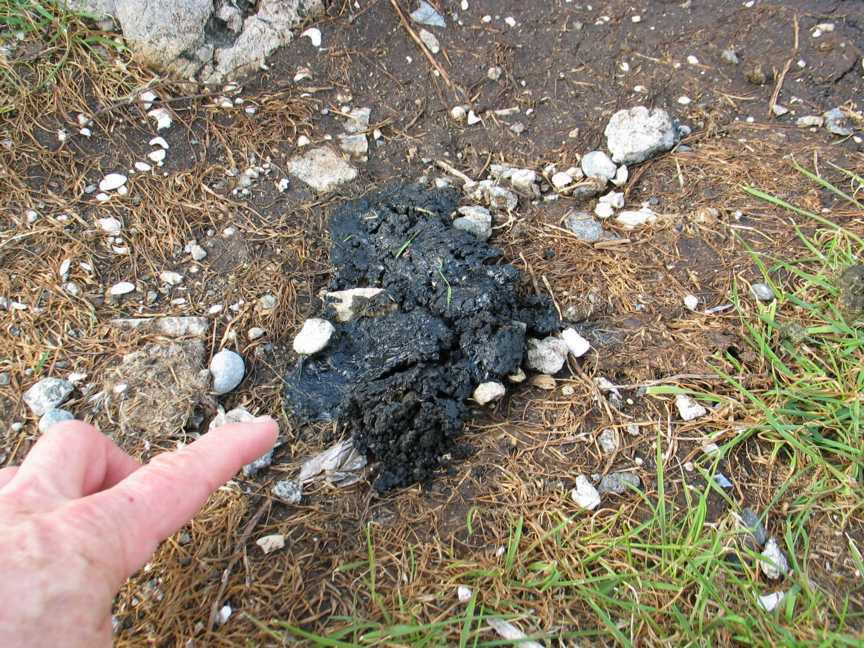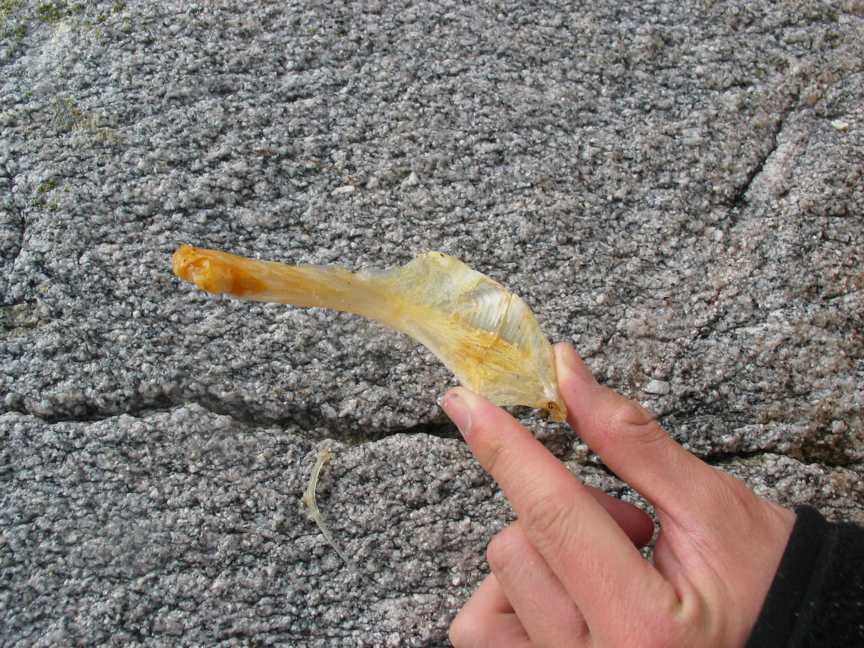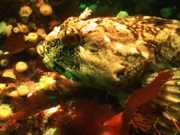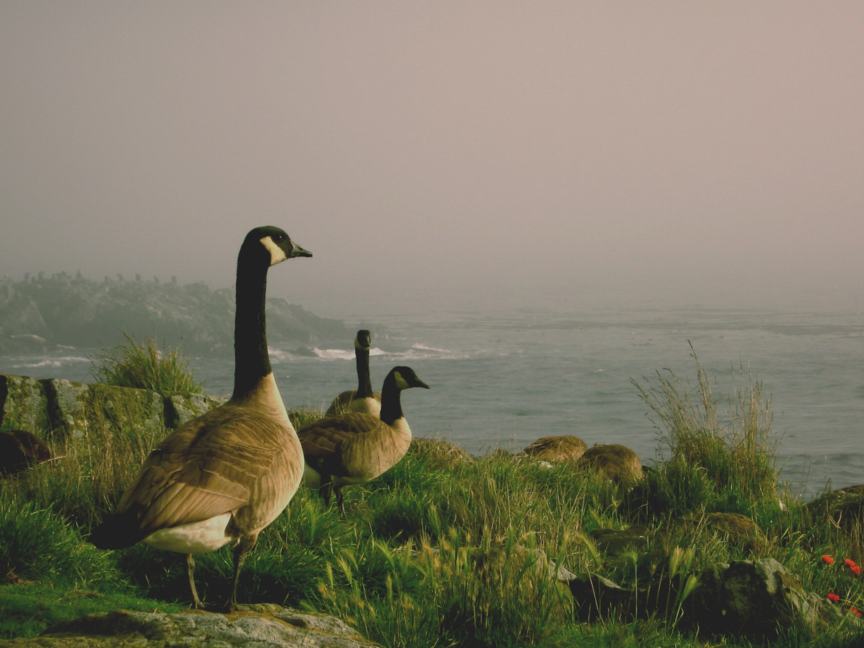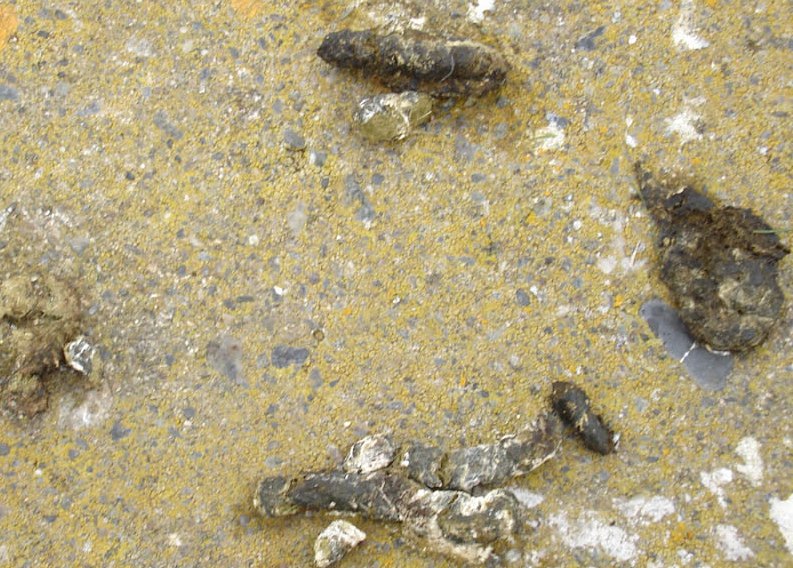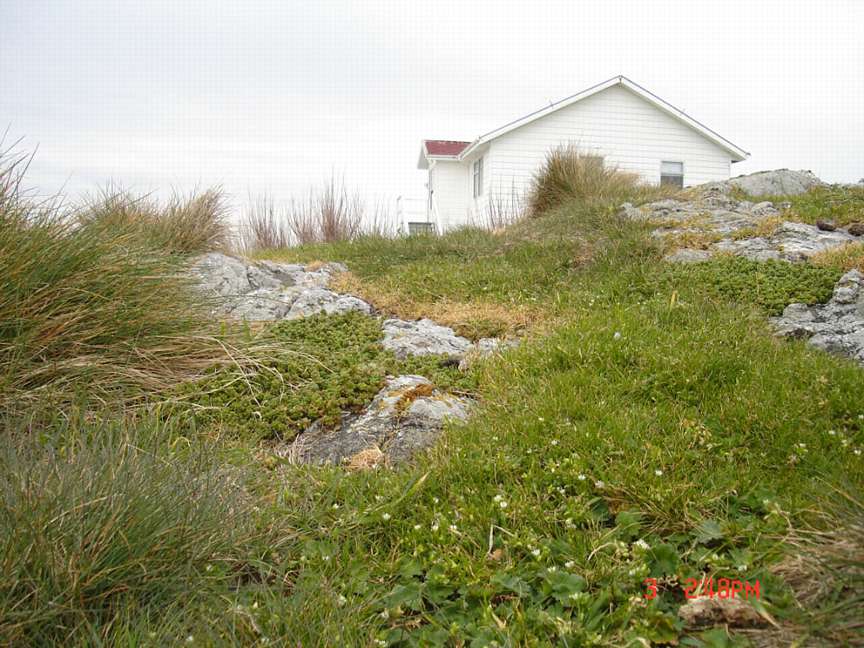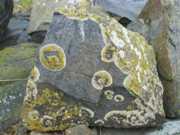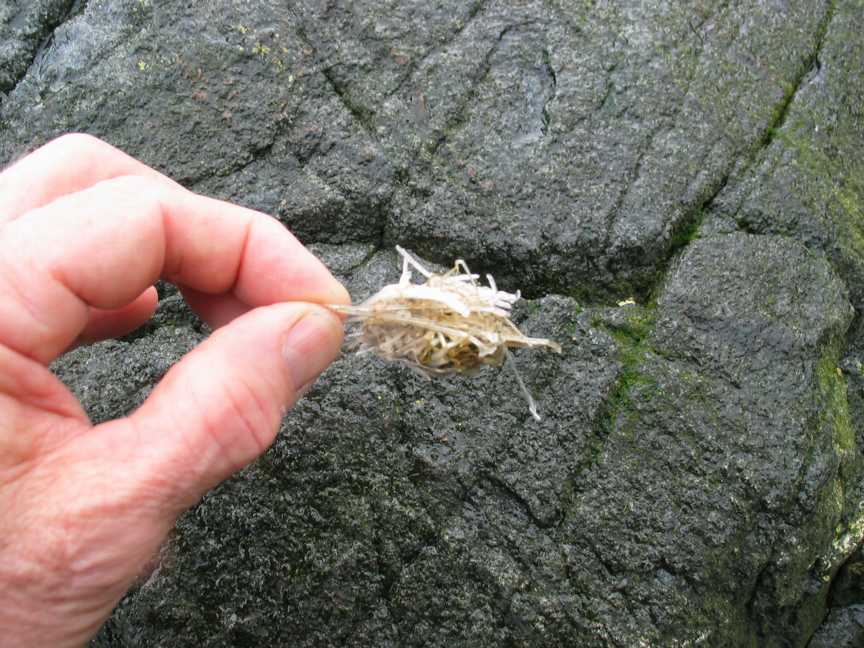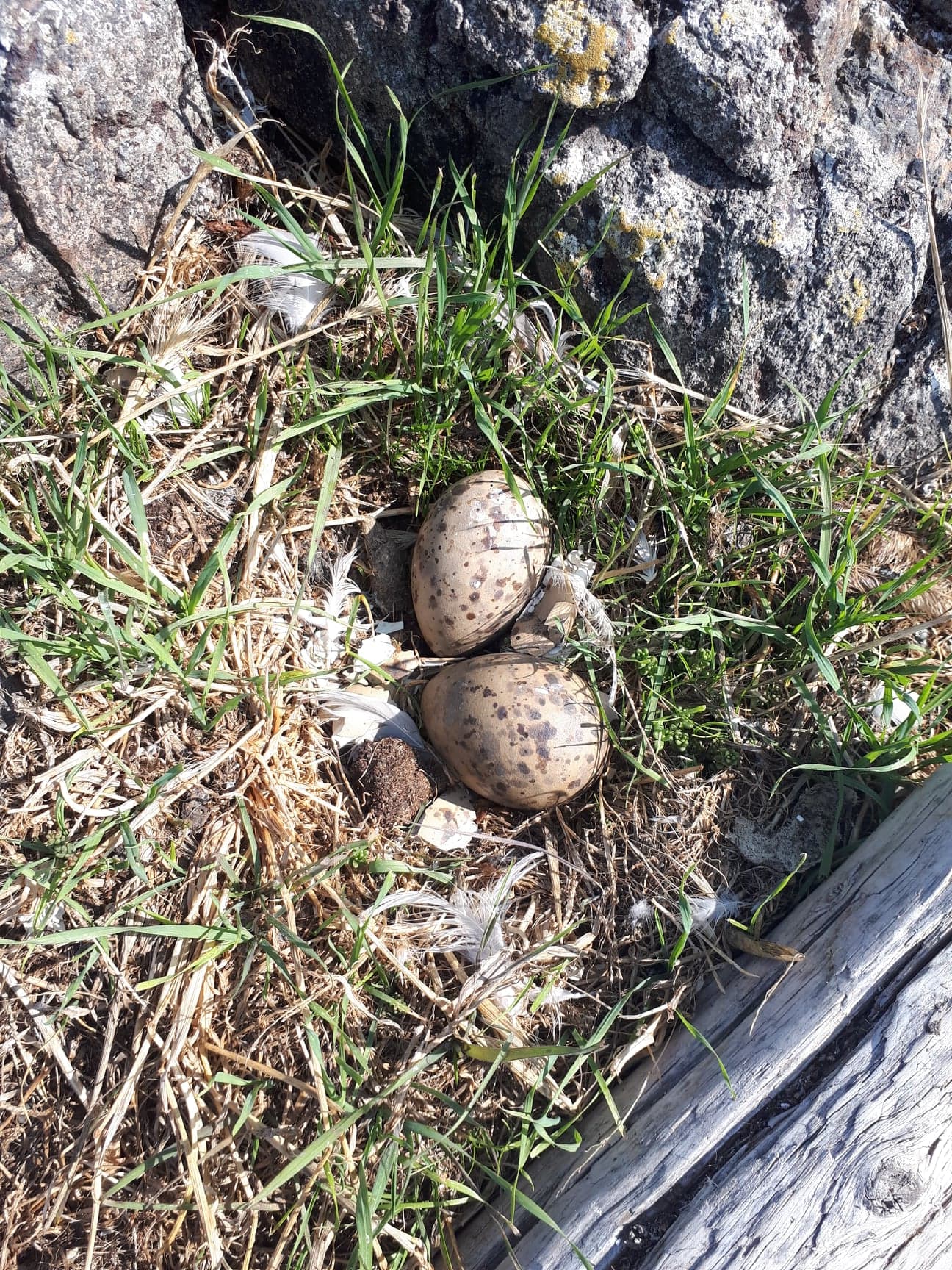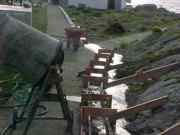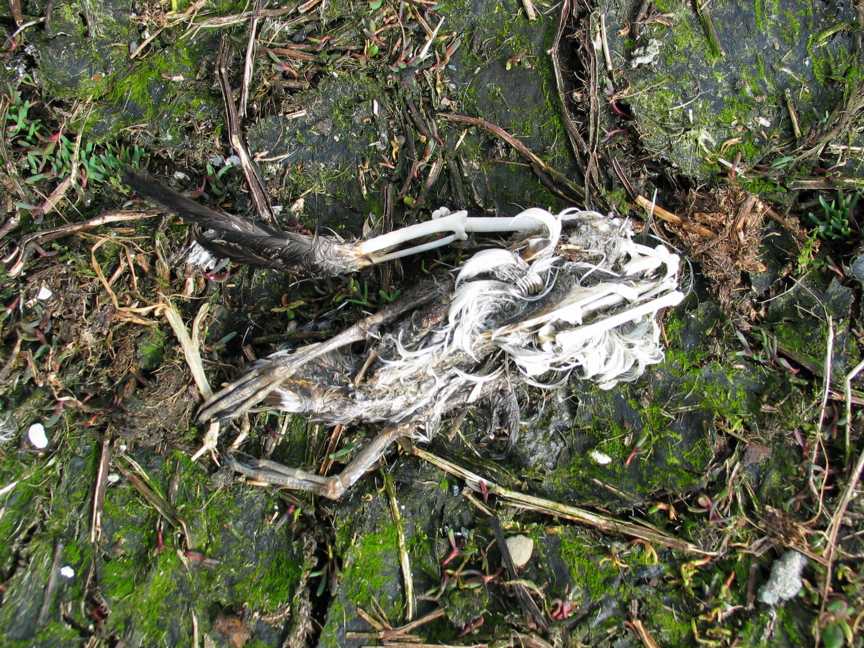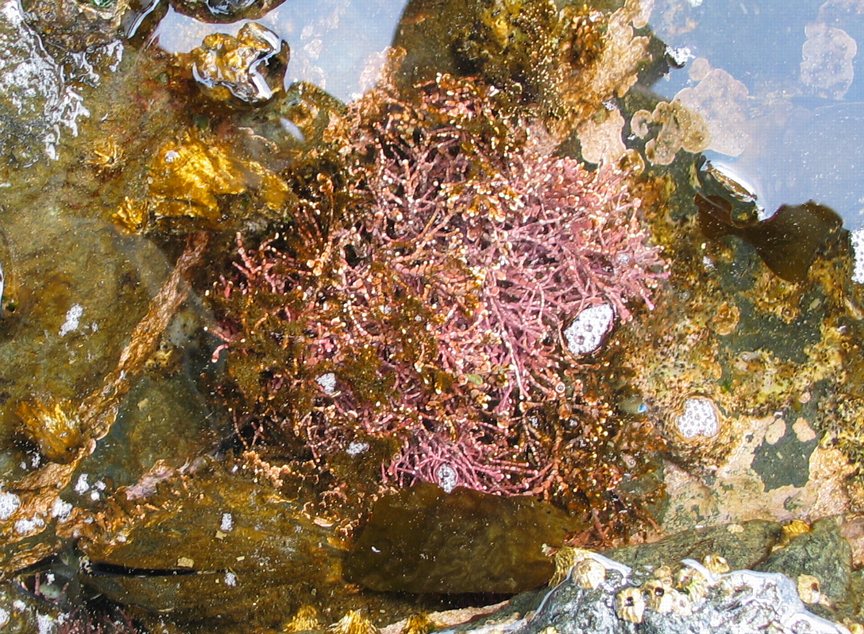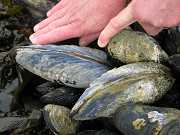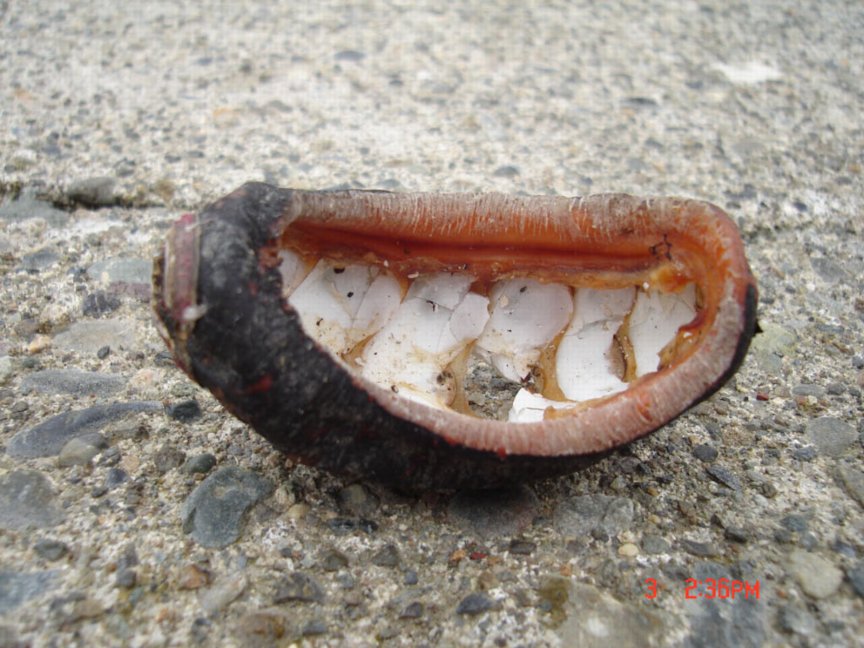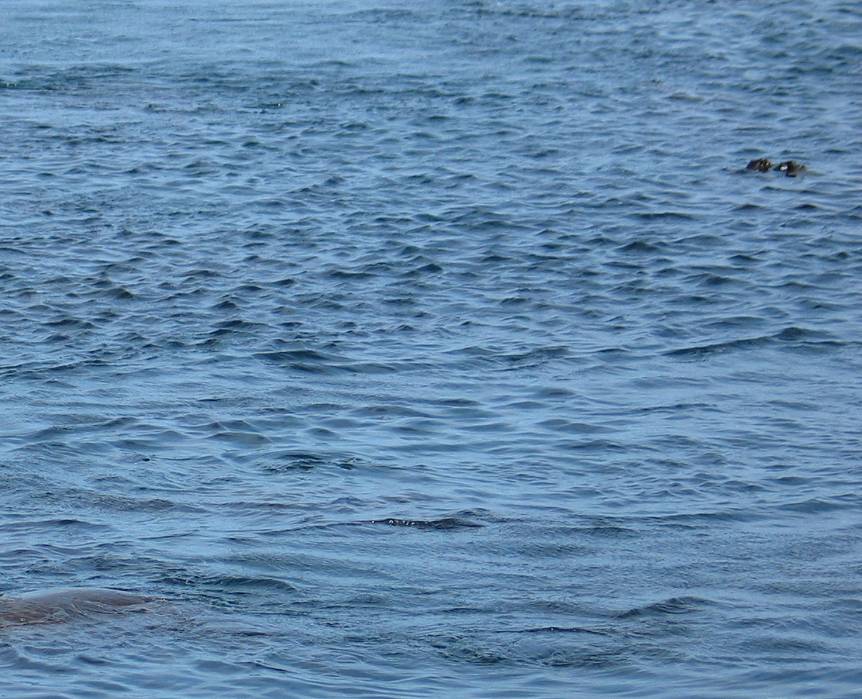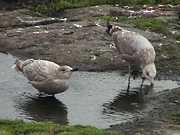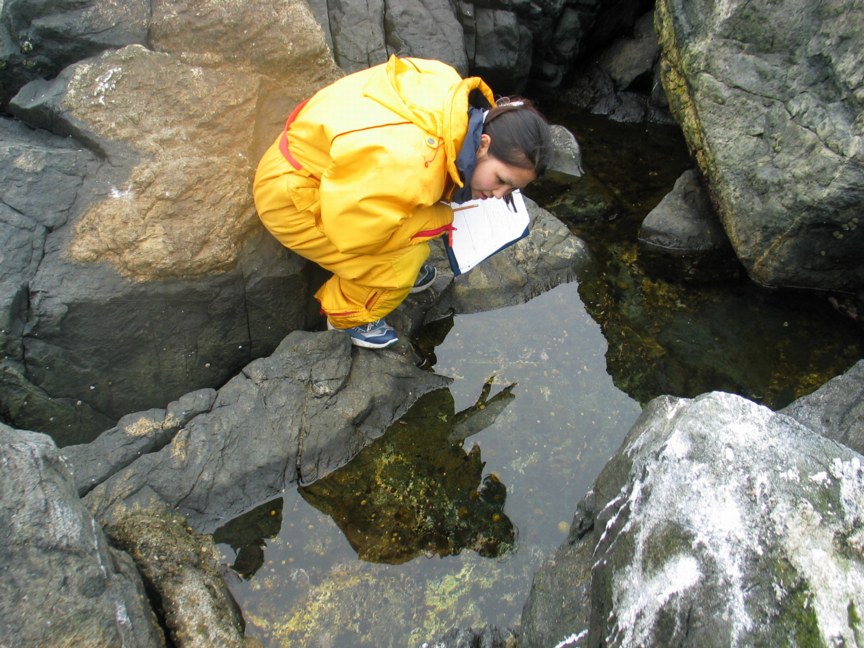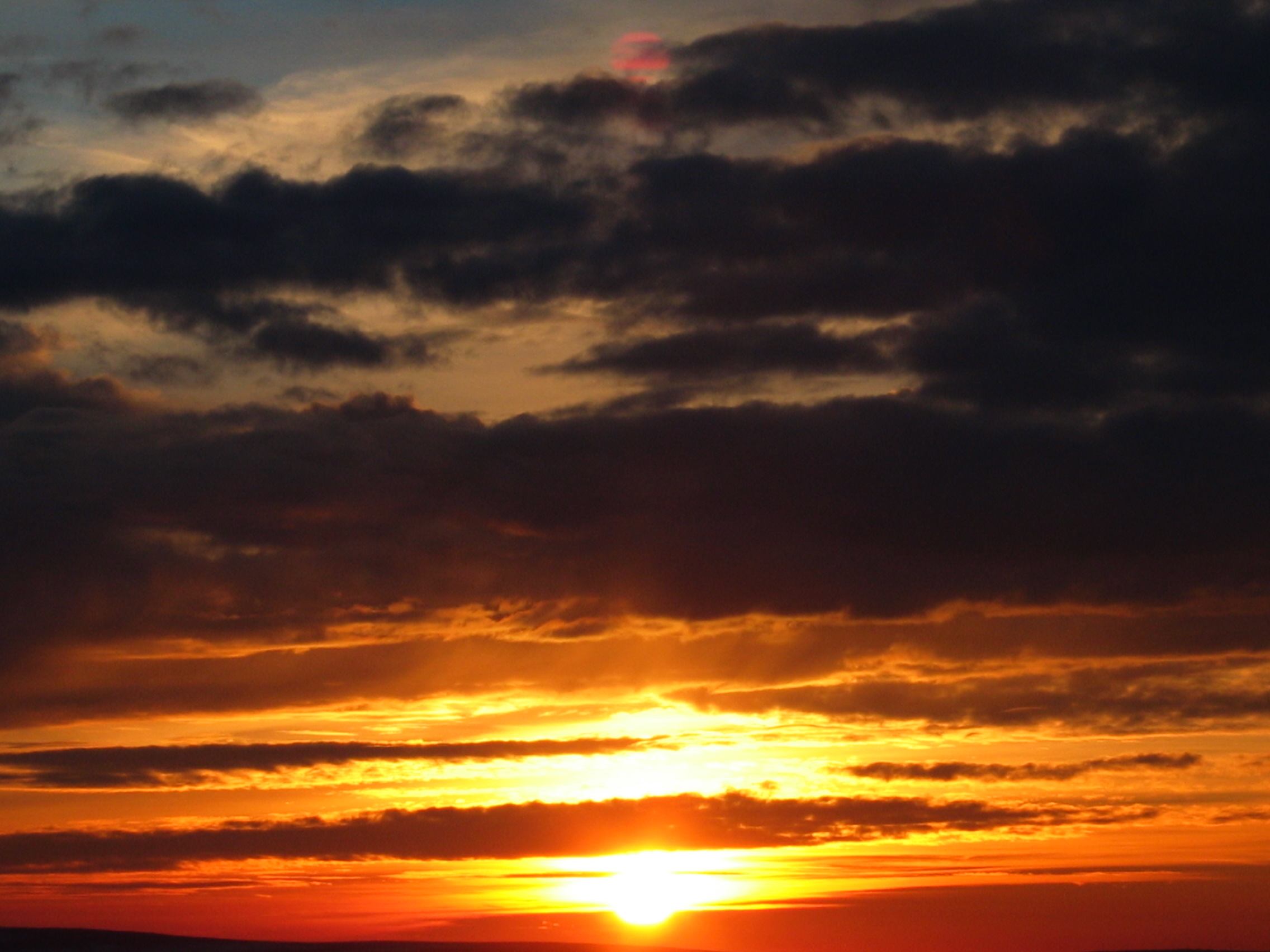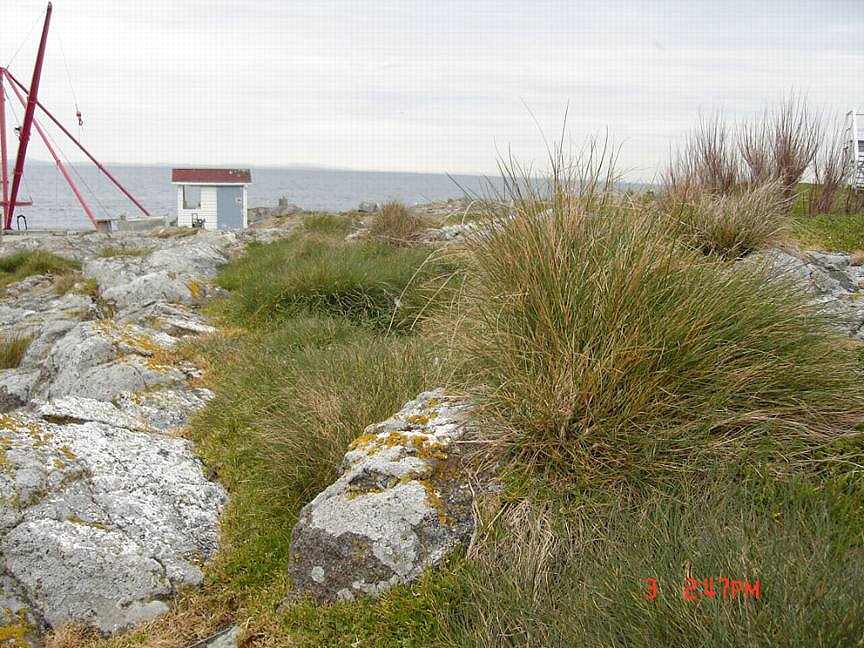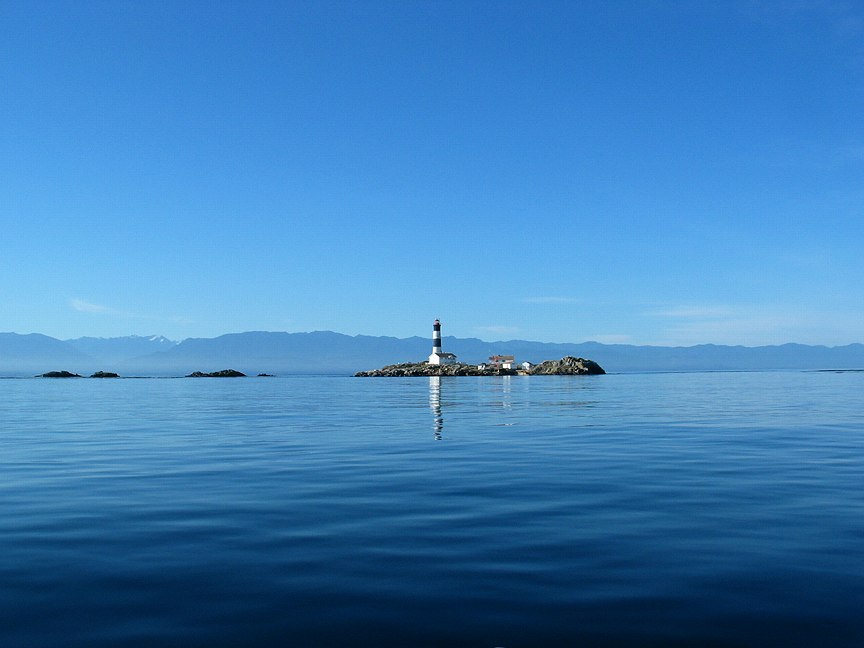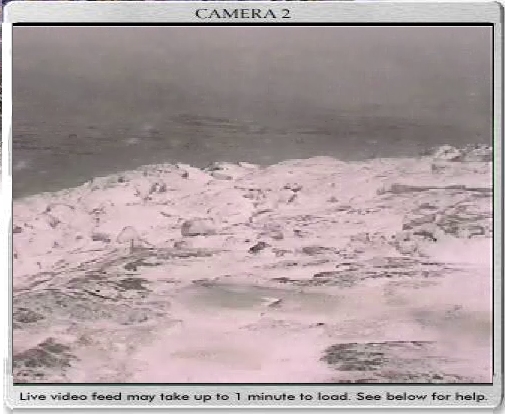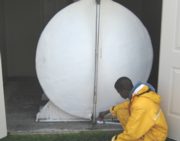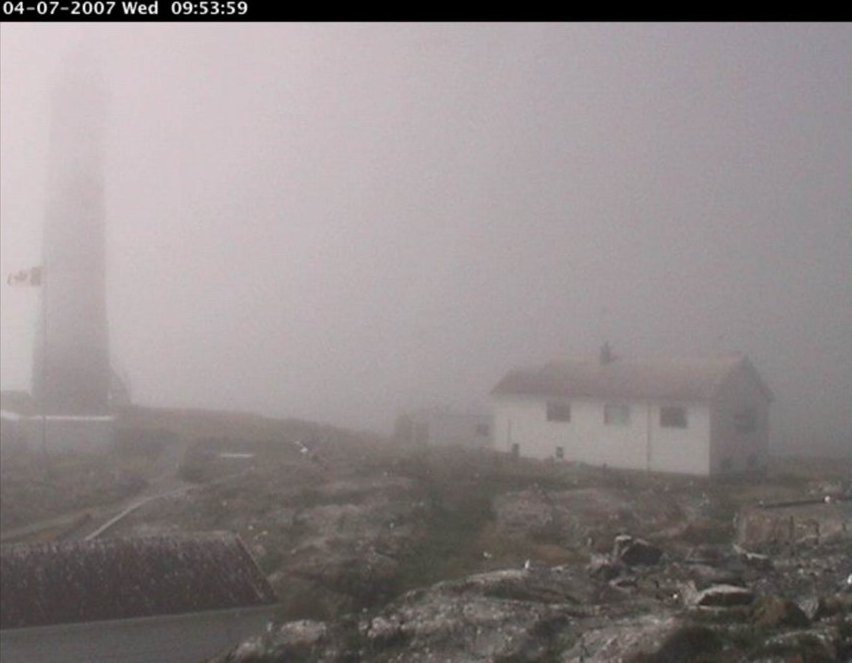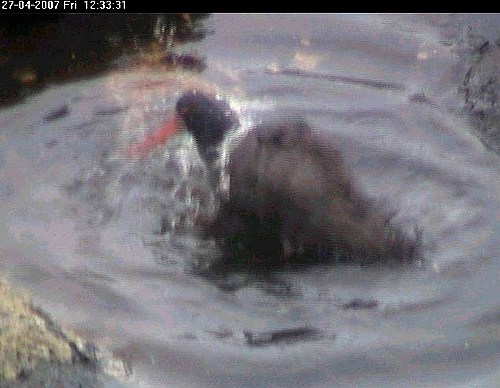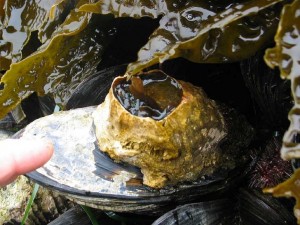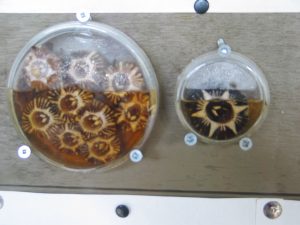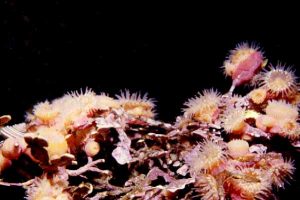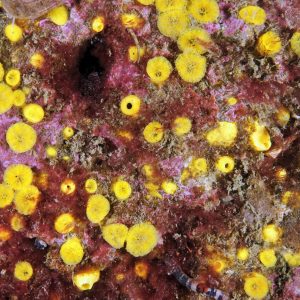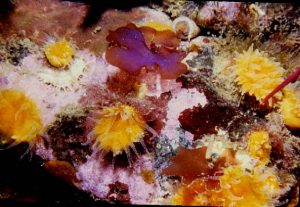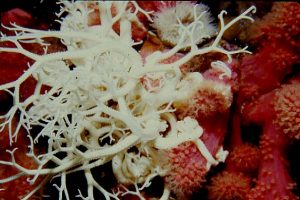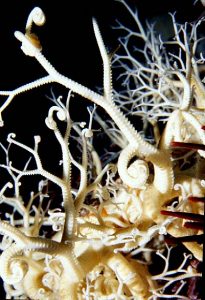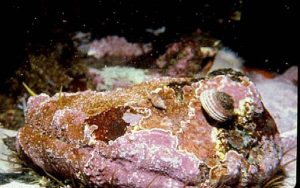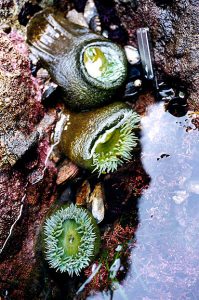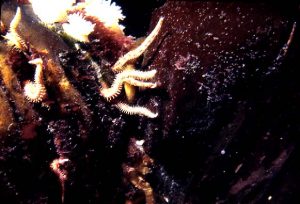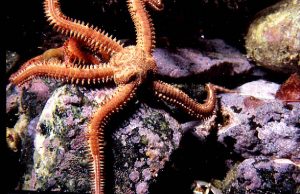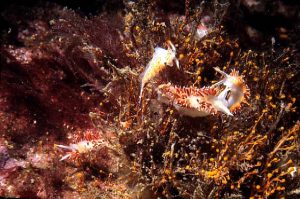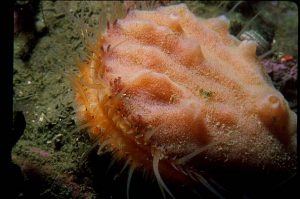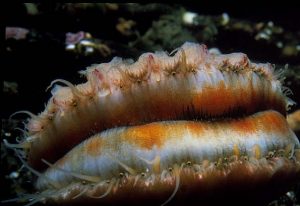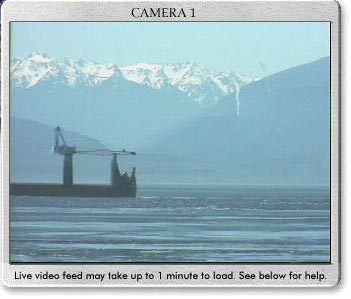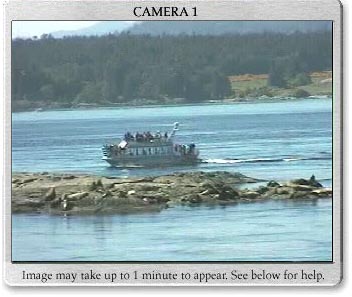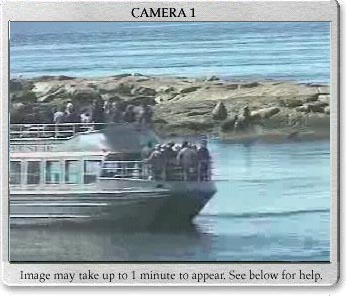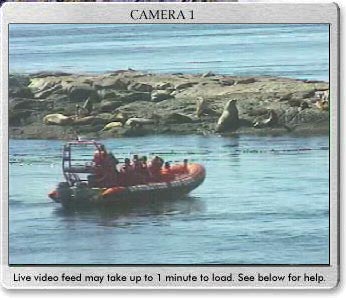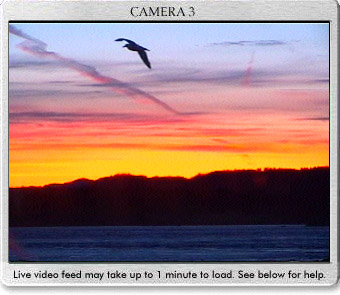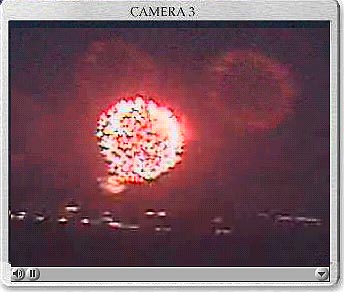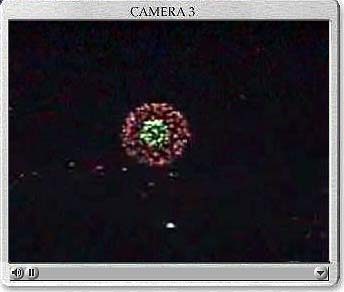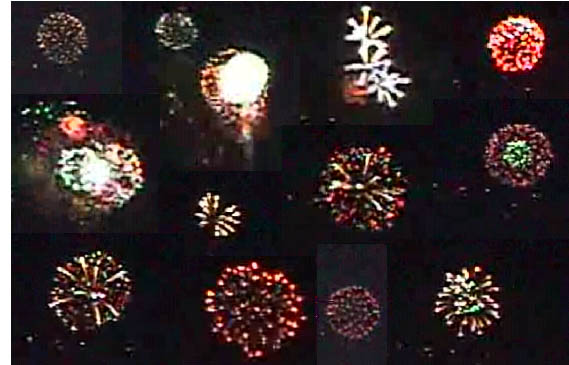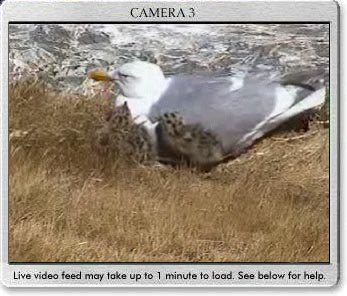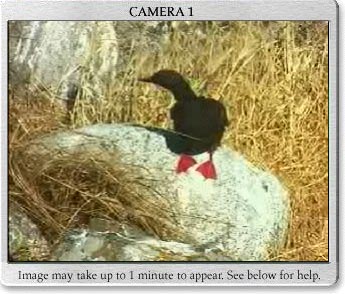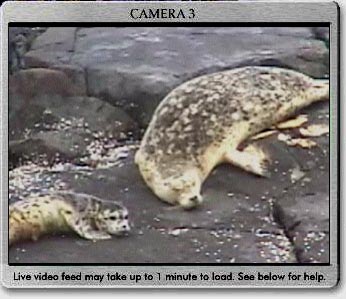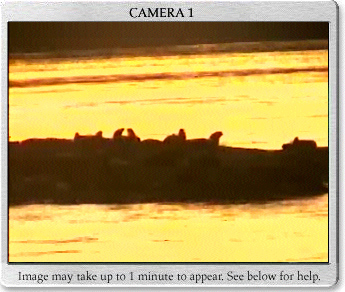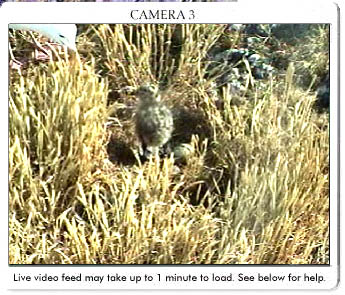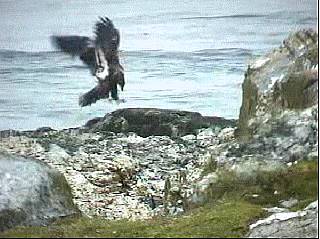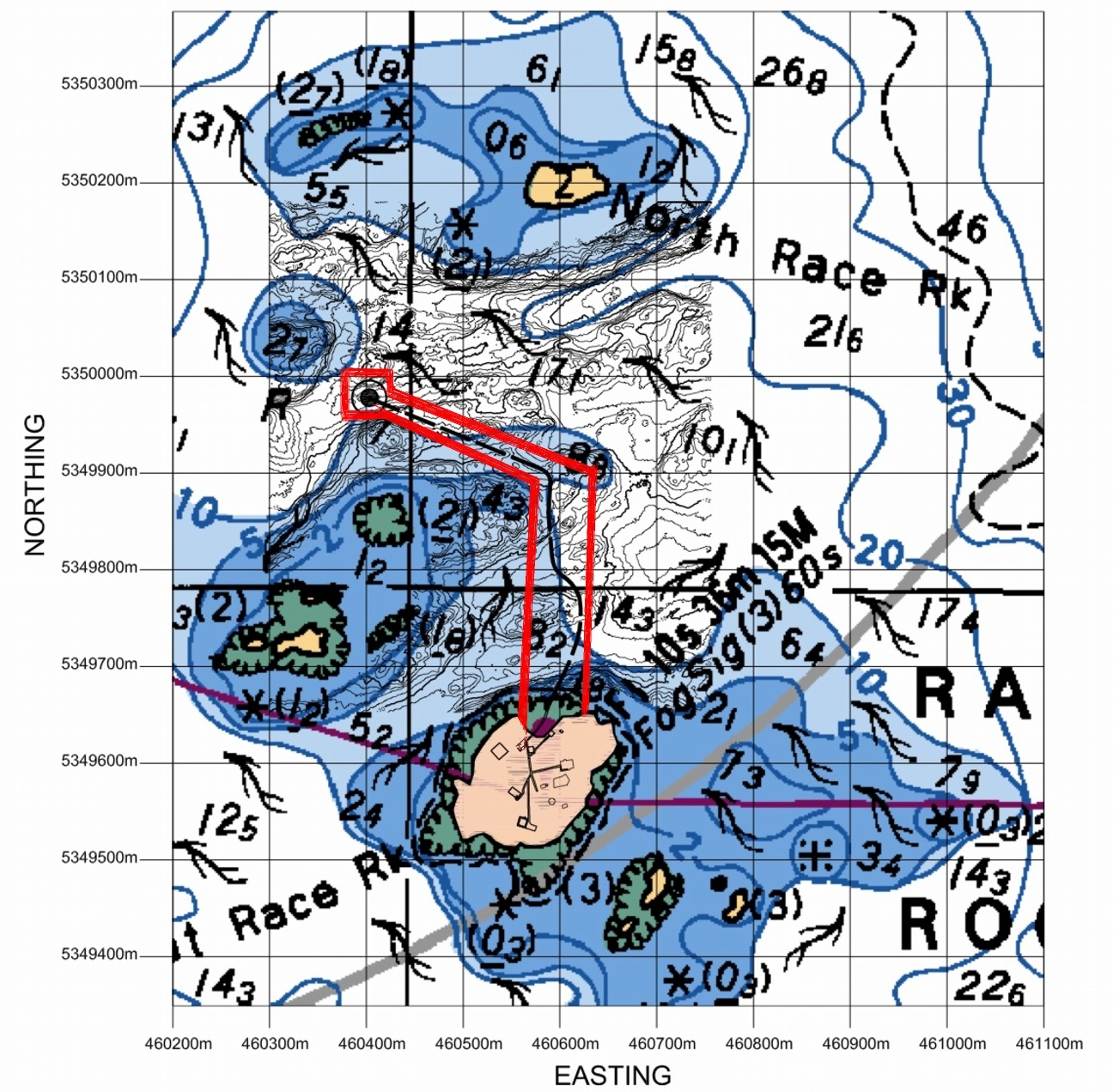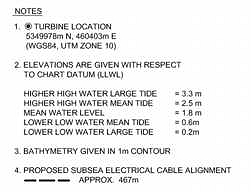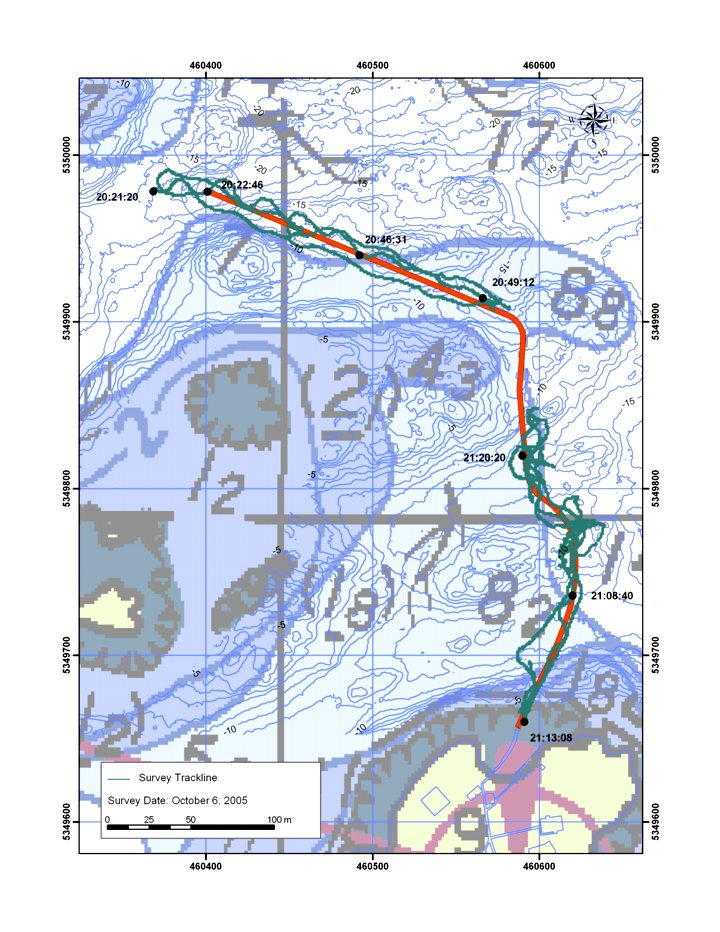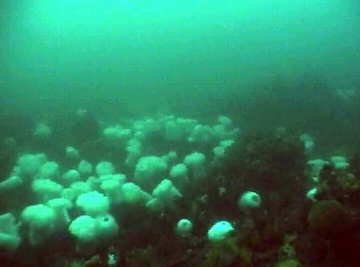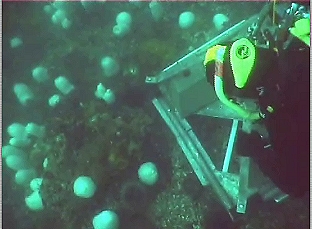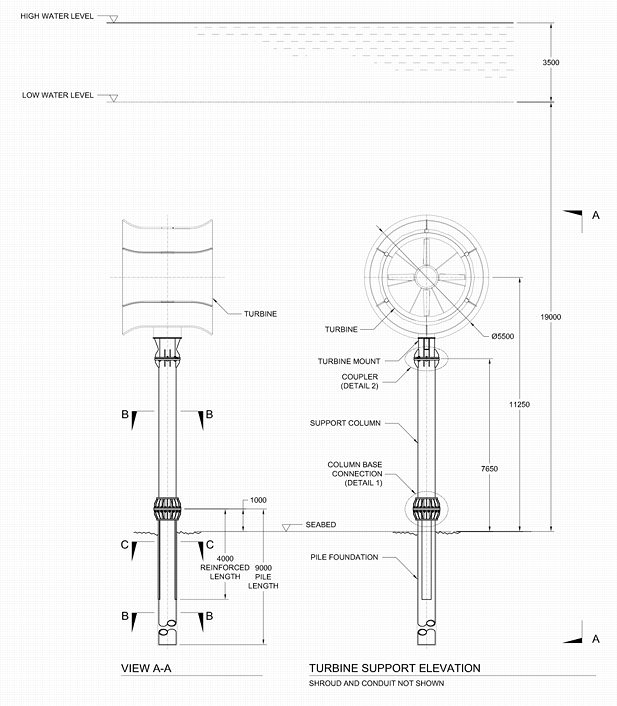The Danish language version of this article is published in the Journal “Geografisk Orientering”.2005 NR2 Link to this 2 page .PDF file.
By Søren Pilgaard Kristensen (PC yr 8 1983)
Associate Professor
Institute of Geography University of Copenhagen
Østervoldgade 10 ,1350 Kbh. K,.Denmark
and Garry Fletcher*
Abstract:
Af Gerry Fletcher og Søren P. Kristensen
I Race Rock, et marint naturreservat i havet udfor British Columbia, Canada, er man gået nye veje for at give skoleklasser og andre interesserede adgang til at opleve det isolerede områdes unikke natur. Artiklen beskriver hvorledes Internet, webkameraer og undervisningsprogrammer bringer havets hemmeligheder indenfor i klasselokalerne overalt i Canada, uden at overbelaste det sårbare økosystem. i undervisningen på det nærlig- gende Pearson college, hvor det blev et yndet mål for feltarbej- de og hvor klasseundervisning i biologi også kunne udnytte de unikke muligheder, som stedet rummer. Det unikke økosystem er meget sårbart overfor fiskeri og forurening, og der var behov Undervisning Som nævnt ovenfor, har Race Rocks igennem snart 30 år væ- ret udnyttet til undervisning og forskning. På grund af øernes afsides beliggenhed, der kræver bådtransport og dykkerudrust- ning for at udforske den del af øerne der ligger under havover- ningspakke drejer sig om måling af bakterievækst i ”tidepools” – tidevandsbassiner. Her bruges digitale billeder af bakteriekolo- nier i biologiundervisningen til, at elever kan måle udviklingen i forskellige miljøer. Der følger en grundig instruktion med til både elever og de lærere der benytter
Link to the Danish Language Version of this articledanisharticle
Abstract: Race Rocks, an island archipelago in the South West corner of British Columbia, Canada is an Ecological Reserve and a designated Marine Protected Area. Students and Faculty of Lester B. Pearson College, the community stewards for this park, have developed the website http://www.racerocks.com to provide via the internet, an educational resource on marine ecology using this sensitive ecosystem as a model for other areas around the world.
www.racerocks.com
A Model for Virtual Access to
Ecologically Sensitive Areas
Race Rocks Marine Ecological Reserve and Marine Protected Area protects a significant high-current subtidal and intertidal ecosystem in the Strait of Juan de Fuca at the southern tip of Vancouver Island, Canada. The reserve contains high current underwater reefs with ecologically significant populations of benthic invertebrates and fish. It protects several rare species which represent unique Canadian or North American occurrences. It also provides haul out and feeding areas for elephant seals and sea lions as well as breeding areas for harbour seals and nesting habitat and migrating resting areas for many species of seabirds. It is these characteristics that make it such a unique environment for discovery and education.
Lester Pearson College is a non-profit educational institution, one of the 10 United World Colleges with students on scholarship from over 80 countries. It has assisted in the stewardship of the Race Rocks Ecological Reserve and Marine Protected Area since the late 1970’s and used it as a community outreach program. Students involved in the science and activities programs of the college have had the opportunity to participate in the operation the island as well as the building and operating of the website devoted to providing an educational resource for this unique environment.
In 1980, the students and faculty were instrumental in having the area declared a Provincial Ecological Reserve. In 1997, with the automation of the Light Station, Lester Pearson College took over the Management of the Islands for BC. Parks. In 1998 Race Rocks was chosen as one of five areas on Canada’s shores to become a new Marine Protected Area under Canada’s Oceans Act. Presently awaiting final approval of the local First Nations, it remains one of the most unique areas in Canada’s system of Marine Parks. Details of the process of involving community stakeholders in the Marine Protected Area Process can be found at: http://www.racerocks.com/racerock/admin/admin.htm. In the year 2000, special funding from Canada’s Millennium Fund helped to launch the “racerocks.com project’ with protection of the ecosystem and the wildlife, both above and below the water, as the main guiding principle.
Racerocks.com was conceived as a project to utilize technology and the internet to bring to the educational community access to a sensitive ecosystem. Through the generous support of sponsors and partners, in March 2000, the website http://www.racerocks.com/ went live on the internet. Since that time several cameras have sent live images continuously out on the internet, and the students and faculty of Lester Pearson College have produced a large resource of supportive background materials and archived video. In addition, a portable video camera and webcast channel is available for special event programming both from Pearson College and Race Rocks. The main aim of the program was to provide a virtual website which presents as many aspects as possible of an environmentally sensitive area, allowing investigators to use the resources of the area without contributing to a negative environmental impact. The target audience is wide ranging, from elementary school to university and the general public. Some of the materials presented are interactive, some present curriculum ideas which can be pursed in the classroom, and some challenge others to use the model of this area to instill the values of environmental stewardship in others so that more areas can be protected yet made available virtually to the public. Since we at Pearson College have benefited for so many years from the resources of this special ecosystem, we feel that by making it available to all, we can contribute a great amount to environmental education and research. We welcome feedback from groups and individuals who use our resources.
From the outset we have maintained a commitment to present a non-commercialized site. I have highlighted 10 components of the website below which are particularly well-suited to demonstrate the value of the resource to education at a number of levels. Some are specifically targeted at the Middle School level, and some are appropriate for high school and even introductory level ecology classes at the university level. Of course the site is available freely to everyone with an internet connection. Copyright release available to anyone using the materials for educational purposes. The provision of two robotic cameras provide a level of interactivity unsurpassed in most educational media. If students are given an assignment where they have to quantify behaviours of an animal, and they can do that remotely by manipulating the controls of a camera, then this is a great motivational device for learning.
The following represents some of the curriculum links provided by racerocks.com
1. The Jason Program activity files on Race Rocks:
These files are designed for the Middle School Level. They provide a detailed set of objectives and a teacher information file, as well as assessment methods.
The part of the website in particular has been designed to facilitate easy implementation by the teacher, complete with specific Learner outcomes and assessment procedures. http://www.racerocks.com/racerock/jason/index.html
a. Scavenger Hunt (An introduction to the racerocks.com website)
b. Geology and Geography (Abiotic Characteristics at Race Rocks),
c. Preserving the Past and Present Culture of Race Rocks (The Thirteen Moons),
d. Maintaining our Coastal Ecosystems (An Ethology),
e. The Northern Abalone,
f. Pinnipeds,
g. Conservation,
h. Seascape – Art
2. The Apple Learning Interchange Files:
The Apple Learning Interchange is providing the distribution network on the internet making it possible for thousands of student connections per week. This exhibit provides one with a glimpse of the educational programs, the technology that makes it possible, as well as ideas to help use our resources in the classroom.
http://ali.apple.com/cgi-bin/WebObjects/ALIView.woa/wa/DisplayExhibit?SiteCode=ali&ExhibitID=1000007 (link now removed)
3. The Race Rocks Taxonomy:
This class assignment allows students in environmental systems and biology to prepare a taxonomy of a species from the Race Rocks area and link to it educational videos and pictures of the species in their habitats at Race Rocks. This provides a useful activity where students can accomplish a number of objectives while contributing a permanent “digital legacy” to help in making this site an enriched educational resource.
http://www.racerocks.com/racerock/eco/taxalab/taxonomy.htm
We have also linked to this exercise a template to encourage other schools to use a similar approach for recognition and conservation of biodiversity in their own local ecosystems. http://www.racerocks.com/racerock/eco/newecosystem/genusfolder/studentemplate.html
4. The “Adopt an Ecosystem” project:
Environmental Education involving science students at undergraduate levels in direct action is the goal of our program at Pearson College. We have found that the production by students of internet materials on environmental issues is a vehicle for doing this effectively. This is a tool, which provides incentive for environmental understanding and encouragement of an “adopting an ecosystem” attitude that can have important consequences in education. The emphasis is on “action” and seeking methods to enable collaboration with others to help solve environmental problems. Students at Lester B. Pearson College have been learning about environmental issues by producing materials for the internet, a “Digital Legacy”. In this way, their education has the added advantage of serving as a resource for others in the educational system in British Columbia and around the world. It also allows them to participate in facilitating collaborative efforts in environmental research.
http://www.racerocks.com/racerock/eco/adopt/adopteco.htm
5. Race Rocks as a Resource for a Statistics exercise.
The purpose of this file is to enable a student to transfer Environmental Data being recorded at Race Rocks from a spreadsheet presented on the internet to their own computer in order to be able to graph trends and analyze relationships. Long-term databases are very important for monitoring change in ecosystems. Patterns of cyclic activity and even events such as Climate Change can be detected from the Race Rocks Data.
http://www.racerocks.com/racerock/education/curricula/ibbiology/labairseatemp.htm
6. Links to Race Rocks Resources for the BC Grade 11 Curriculum:
Selected Biology Prescribed Learning Outcomes are taken from the B.C.Ministry of Education K-12 Curriculum and Learning . The Outcomes which are related to Race Rocks are presented on this page with racerocks.com links
http://www.racerocks.com/racerock/education/curricula/bc11bio/bc11bio.htm
7. IB Biology and Environmental Systems Ecology Resource.
The objectives of the International Baccalaureate program for secondary students are linked to appropriate activities and resources in these files.
http://www.racerocks.com/racerock/education/curricula/ibbiology/bioecol.htm
http://www.racerocks.com/racerock/education/curricula/ibensy/ibensy.htm
8. The Animal Behaviour studies:
This file is intended for Secondary school students. It provides ideas for taking the live images on the cameras and for doing a scientific study of the complexities of animal behaviour.
http://www.racerocks.com/racerock/education/ethology/ethology.htm
9. The Ecological Niche and The Transect File:
These two files demonstrate useful ecological quantification techniques and allow an interactive format for the students to study this aspect of ecology. They further provide a model for doing similar studies in ones own ecosystem.
http://www.racerocks.com/racerock/transect/econiche/econiche.htm and
http://www.racerocks.com/racerock/transect/transrrk.htm
10. Race Rocks as a Facility for Graduate-Level Research:
Dr. Gitai Yahel is currently doing post-doctorate research at the University of Victoria. He has worked with us in doing in situ research on the Trophic Dynamics of the Invertebrate Community at Race Rocks. This video and a link to an explanation of his work is a useful example of the type of non-consumptive research that can be done in an underwater marine reserve. Other outside researchers are presently being supported by the college in the areas of tidal current energy and Invertebrate taxonomy.
Since part of our goals relate to the involvement of our own students in providing the programming live via the internet, the following account describes how one student expressed his satisfaction with the process in a project week in June in bringing a set of live programs to the internet:
“I am one of three Pearson College students currently spending 11 project days at Race Rocks Marine Protected Area. We are all year 29 students of Pearson College who decided to stay for this project after our first year, and we will soon be going home to different countries of the world. My name is Jeremias Prassl, I’m from Austria. Even though coming from a landlocked country, oceans have always had a great fascination on me. Coming to Pearson College and living on the Pacific Ocean was the realization of an old dream. Through my IB biology class as well as waterfront activities at the college I’ve learned to value marine life in all its beauty and diversity. During the year, I spent one project week at Race Rocks, studying marine mammal behaviour in relation to the DND’s weapons testing. Numerous trips led me out to the island, some for biology classes (and related fieldwork), and some for helping with tasks necessary for the island, such as bringing fuel for the generators. Every time I come to Race Rocks, it allows me to discover something new, to explore a new aspect of this gorgeous place. This has been an amazing time for all of us. Diving, learning more about the reserve and species living on it, contributing to research projects, producing live webcasts daily, and helping the lighthouse keepers in maintaining the station have just been some of the tasks we pursued during the last days”
Jeremias Prassl, June 2003
Although so many people get to use the wonderful educational resources of the Race Rocks area by going there virtually on the internet, the wildlife is not harmed and the environment remains pristine. If we can say this after another 20 years and if other places have taken this technique and applied it in a similar way, then the experiment will have been worth every bit of the volunteer time and effort to make it successful. The program takes advantage of new media and new technology in a original and creative way which will hopefully form a model for education in conservation ecology in many parts of the world. When young people are given ownership of an idea they tend to internalize the values and end up with their own real commitment. Perhaps this is the aspect which we are most proud of in this project. From the examples we have seen of what our own students have gained and contributed in this venture, we know how effective this process can be and how powerful it is an educational tool. Because the project involves a creative approach to conservation education never tried before on this scale, and because it gives the confidence to our own international students knowing that their efforts can have a wider effect, influencing conservation practices beyond our local example, we feel this program has a major value in Distance Education.
We have recently started to build a set of pages which contain the translations of our racerocks.com website sitemaps. These are portrayed by flag icons at the base of the home page http://www.racerocks.com. The pages were done by the students of our racerock.com activity. It is hoped that we will be able to expand this coverage of languages in order to provide a start to multilingual access to the resource.
It is a difficult job securing at least $100,000 a year to keep the island operational. What is really needed is an endowment, and this we are determined to build up over the next few years. Keeping observers and cameras on the island has in the last few years served to keep the many users of the area such as whale watching boats accountable, so that the ecological integrity of the resource may be sustained. On the home page of racerocks.com is written: “we humans are never content just to know that a special area exists on this earth. We strive to be there, to touch, to feel, to consume. But therein lies the paradox. In so doing we can destroy the very thing we love.” The aim of the racerocks.com program has always been to make this special ecosystem available to all through the Internet. We have been fortunate to have this opportunity to establish a window into the daily lives of the creatures of a rugged marine island ecosystem. We just hope that we can continue to make the amazing life of these islands available to all. Last spring with the further assistance of Apple Computer, we upgraded our computers and added a new 340 degree robotic camera which provides a much more thorough survey of many parts of the islands from your own computer.
——————————————————————————————-
Author: *Garry Fletcher has worked with the Race Rocks project as a teacher since 1978. He has recently retired after teaching for 36 years, The last 28 of those years have been spent in teaching Biology and Environmental Systems and in the SCUBA Diving program at Lester B. Pearson College. He has always valued the role of hands on involvement in environmental projects to stimulate students. Garry now continues as the Educational Director of Race Rocks and continues development of the website at http://www.racerocks.com. He also serves as a marine education consultant from his home in Metchosin, British Columbia, Canada. )
In June of 2000, at their annual conference in Dunedin New Zealand, The Commonwealth Of Learning presented it’s Award for Excellence in Distance Education materials under category B: multimedia materials supporting non-formal education, to Lester B. Pearson College, Victoria, Canada for its on-line materials “Racerocks.com”. They recommended this multi-media material for the award because it is fitting for a variety of clientele needs in non-formal education in the very important area of the environment, it has adopted a sound learning and instructional design, and it uses a variety of media which can be integrated in a flexible manner according to individual learning needs and interests. (http://www.racerocks.com/racerock/events2004/col/colaward.htm)
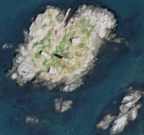 2. One of the advantages of using Race Rocks as a model to study ecosystems is that many parts of these components can be studied remotely on the internet. Go to this file to see how you might use the robotic cameras to study the horizontal distribution of the ecosystem. It also provides several examples of how you can determine horizontal distribution of organisms.
2. One of the advantages of using Race Rocks as a model to study ecosystems is that many parts of these components can be studied remotely on the internet. Go to this file to see how you might use the robotic cameras to study the horizontal distribution of the ecosystem. It also provides several examples of how you can determine horizontal distribution of organisms.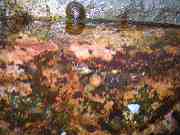
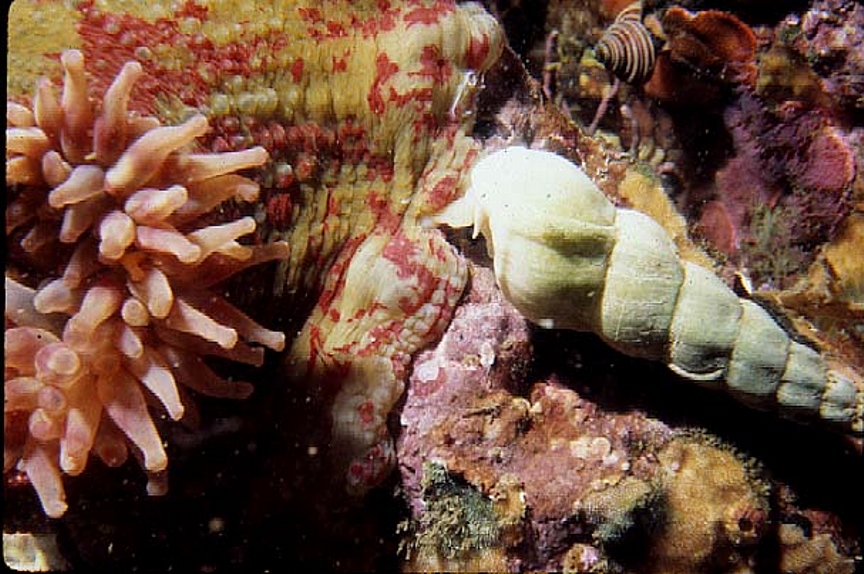 may be so specific that only few organisms have adapted to survive in that ecological niche. Choose one of the species shown here that have been sighted only occasionally at Race Rocks, and propose an hypothesis about how environmental factors may determine the distribution of the rare species. It is anticipated that changing climatic conditions as the result of anthropogenic impact might lead to a change in the species that can tolerate the environmental conditions of the future.
may be so specific that only few organisms have adapted to survive in that ecological niche. Choose one of the species shown here that have been sighted only occasionally at Race Rocks, and propose an hypothesis about how environmental factors may determine the distribution of the rare species. It is anticipated that changing climatic conditions as the result of anthropogenic impact might lead to a change in the species that can tolerate the environmental conditions of the future.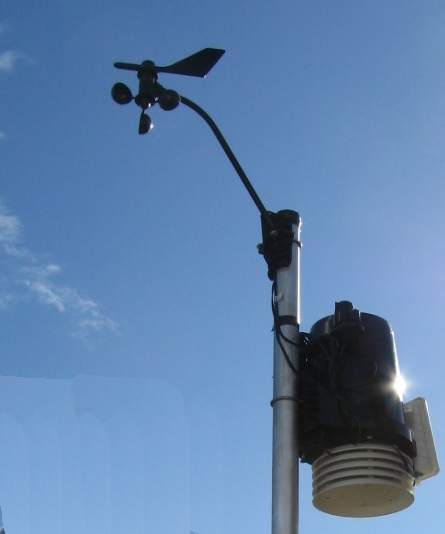 Index of Race Rocks Environmental Data Index. .
Index of Race Rocks Environmental Data Index. .
